Desktop NVIDIA GTX 980 Coming To Gaming Notebooks
by Brett Howse on September 22, 2015 9:00 AM EST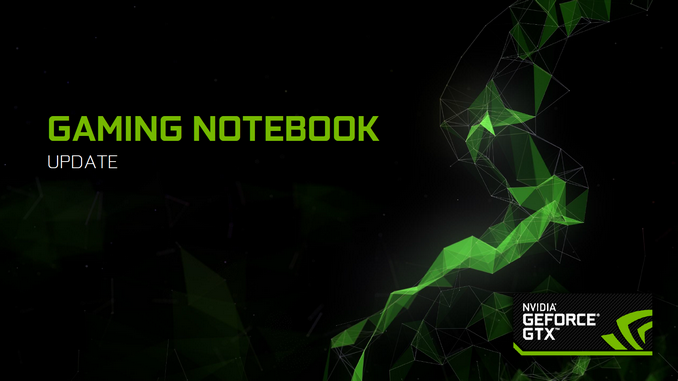
For as long as NVIDIA has been putting GPUs into notebooks, they would always have a separate lineup of GPUs which were designed for the thermally constrained environment of a notebook computer. But today’s announcement puts NVIDIA’s new strategy front and center, that the full desktop-class GTX 980 (with 2048 cores) will be made available in an MXM format for notebooks as well as integrated designs.
Maxwell was the first GPU from NVIDIA which they designated as being designed for the mobile and consumer markets first. Despite this focus on mobile performance and efficiency, NVIDIA has managed to optimize the 28nm process to focus on efficiency first and foremost but still with powerful designs, including the GTX 980 and GM204 and of course now featuring the GTX 980 Ti and Titan X models as well.
There has certainly been a paradigm shift in the GPU market lately. Yes, desktop class cards certainly have a much bigger power budget than anything in a notebook, but due to the 28nm process being the sole contender for four generations, GPU architectures have focused on silicon efficiency rather than relying on node shrinks to rein in the power budget. As a result, the maximum power requirement for the high end GPUs has come down quite significantly - this helps with thermals and noise levels as well. So let’s get to today’s news from NVIDIA. No longer are they satisfied with the performance levels available in notebooks, and they have worked with OEMs on a new initiative to shoehorn desktop class parts into the notebook lineup.
And they are not going forward with low end desktop parts either. The GTX 980M is already roughly 75% of the performance of the desktop GTX 980, so there is little point in starting with a lower end part. NVIDIA is going right for the top with the full desktop-class GTX 980 now available in certain notebooks first. The regular TDP numbers for a desktop version of the GTX 980 come in at 165W - the version going into these new notebooks we are told will come in under that, but there won't be any official number attached to it.
NVIDIA is leaving a lot of the design up to the OEMs so that they can create the experience they want. One of the keys for this launch though is a focus on overclocking which is something that has generally been lacking in the notebook space outside of a couple of niche products. This may be combined with Intel’s latest K series mobile parts too which also offer overclocking, and the enthusiast market just got a major kick in the backside.
NVIDIA did offer guidance and support for the OEMs as they were building their solutions, and we should have a pretty wide range of products offered. We will have to wait for OEMs to officially launch products to get a full list of what they have added, but NVIDIA is requiring four to eight phase power on the GTX 980 compared to just two to three phase on GTX 980M. The desktop-class part will have up to 50% higher peak current available under load.
When discussing the new initiative, NVIDIA was very quick to point that they are not binning chips to put in the notebook either, although the GPUs are put through extra verification to ensure that they meet higher requirements for performance and efficiency to ensure there will be enough headroom for use in a notebook, as well as some extra for overclocking. They assured us that they have had no issues with yields with the extra scrutiny, so volume should not be an issue. So the chips are pre-selected for the OEMs to use.
While this is in fact a full desktop GM204 GTX 980 with 2048 cores, being that it is in a notebook the voltages and frequencies will be reduced a bit, but final clock speeds will depend on the final designs from the notebook manufacturers. What will not be lacking though is the full memory speed, with up to 7 Gbps of bandwidth available from the GDDR5 memory, and 4 and 8 GB versions will be available.
It’s not just enough to fit a desktop part into a notebook though, especially if you are going after the overclocking enthusiast market. NVIDIA has also worked to include fan control into their tool set which should also let owners tweak the fan profile for various scenarios. This will all be accessible in notebook overclocking tools provided by the OEMs.
Virtual Reality is likely one of the most demanding compute tasks to come along in quite some time, and NVIDIA is announcing that the GTX 980 notebooks will be the first notebooks certified for driving VR. Not only is the resolution for VR higher than most gaming notebooks, but the refresh rate is bumped up as well. NVIDIA is showing a difference of 120 Megapixels per second for 1080p gaming versus 450 Megapixels per second for a VR headset.
Since NVIDIA doesn’t directly sell notebooks, we will have to wait for OEMs to announce pricing and shipping dates, but NVIDIA had six notebook designs to go along with the announcement from Aorus, Clevo, ASUS, and MSI. MSI should be first out of the gate with a new model of both the GT72 and the GT80 which will offer GTX 980 in SLI. ASUS is going to be using the GTX 980 in their new liquid cooled GX700VO that was announced at IFA. Aorus will offer the X7 G-SYNC, and Clevo will have both the P870DM and P775DM.
MSI GT72 G-SYNC
MSI GT80
ASUS GX700VO With Liquid Cooling Dock
AORUS X7 G-SYNC
Clevo P775DM
Clevo P870DM
Clearly this play is a niche within a niche, but the gaming notebook segment is still alive and well (and profitable) and there seems to be an audience who is just willing to pay for the best while still keeping it 'portable'. Packing a desktop GPU into a notebook which isn’t the size of a small car is a feat that would not have been possible just a generation or two ago - the only other alternative is some Thunderbolt implementation which still hasn't reached maturity. NVIDIA’s push to making Maxwell as efficient as possible has had a nice side effect for them. It is an interesting play and it will be interesting to see if these new designs can run as cool and quiet as the GTX 980M models already do.
Source: NVIDIA


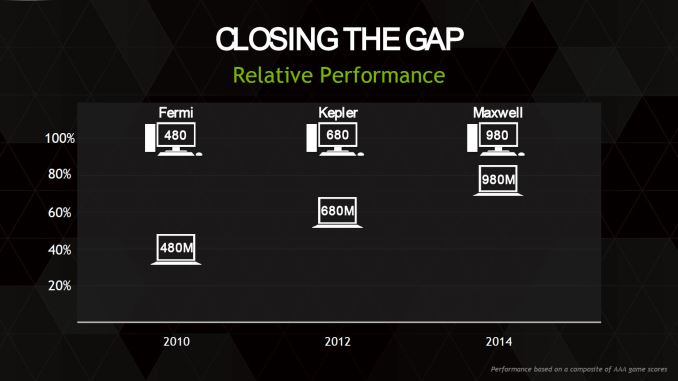

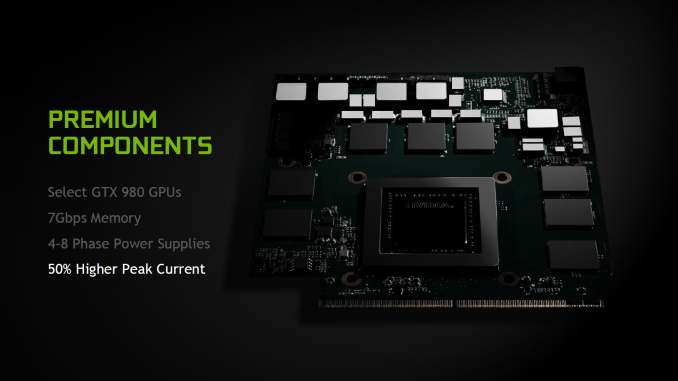
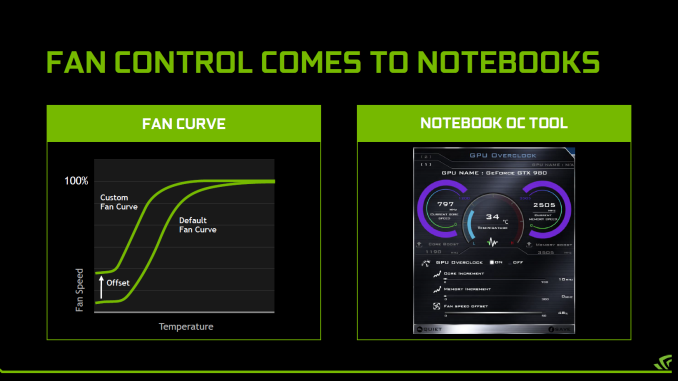

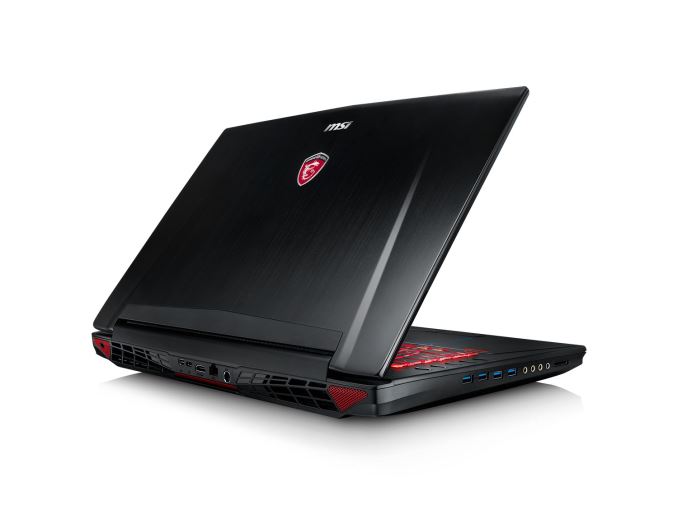
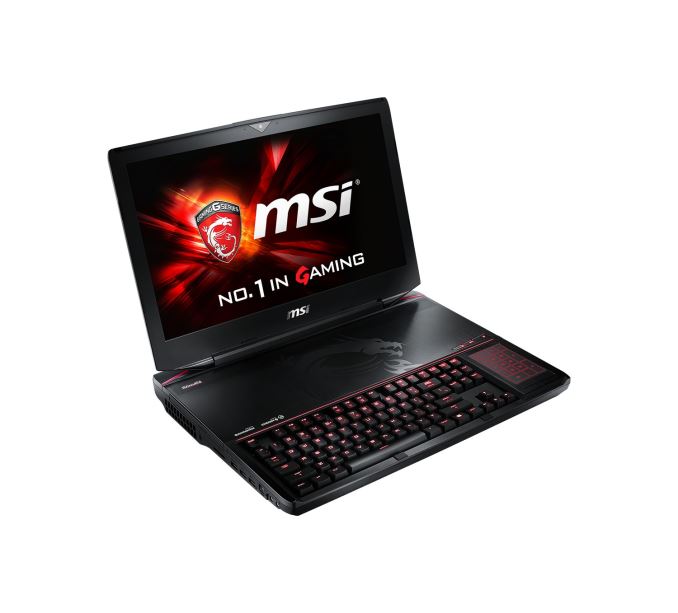

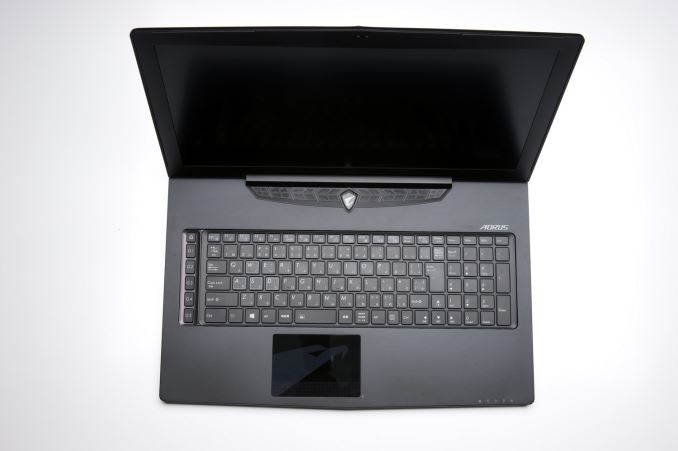
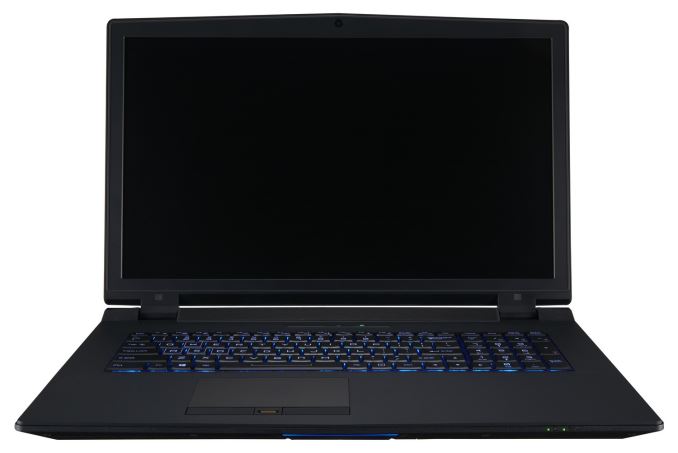
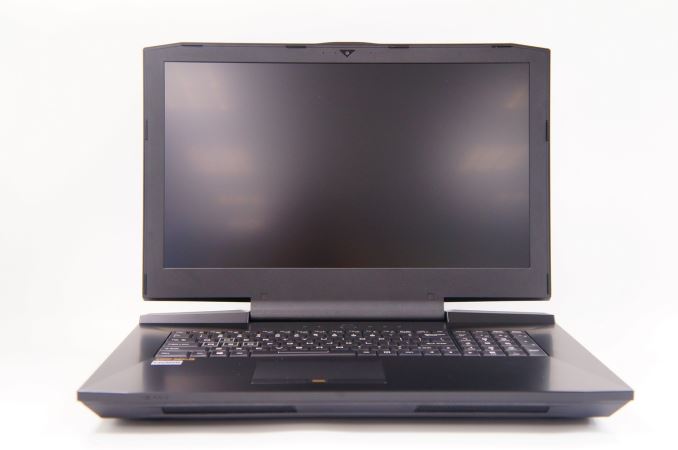








58 Comments
View All Comments
thetuna - Tuesday, September 22, 2015 - link
"NVIDIA was very quick to point that they are not binning chips to put in the notebook either, although they are [insert definition for binning]."Brett Howse - Tuesday, September 22, 2015 - link
That's pretty much right :)mfenn - Tuesday, September 22, 2015 - link
I logged in to say the same thing. Gotta love that press release doublespeak.nerd1 - Tuesday, September 22, 2015 - link
980 already have laptop-level TDP (120W) so it's quite natural to me.dragonsqrrl - Tuesday, September 22, 2015 - link
The 980 has a 165W TDP.r3loaded - Tuesday, September 22, 2015 - link
Mmm, packing a full-fat 980 and an overclockable CPU into a laptop sounds like a great way to make enough smoke for a barbecue! Either that, or we'll be stretching the very definition of a "lap" top.yhselp - Wednesday, September 23, 2015 - link
Welcome news, especially in regards to more widespread 'official' notebook overclocking support, and while this is undeniably an engineering accomplishment, it still feels like Nvidia is shoving good old aggressive marketing down people's throats.After all, what's so desktop-like about this new mobile chip? It's still a mid-sized GPU, and not 'Big Maxwell', just like 780m and 880m before. Kepler too offered fully enabled high-end GPUs for mobile. The big difference this time is 7 Gbps memory bandwidth, rather than 5 Gbps and that's before compression.
Mid-size Maxwell may very well be slightly bigger than mid-size Kepler, but I still feel like the author should have specified that it's not quite like Nvidia has managed to fit a current gen flagship GPU into a notebook.
When a casual consumer reads this piece, it's more likely than not they'll come away with the impression they would get flagship desktop performance (i.e. 980 Ti or Titan X) if they buy a 980-equipped notebook which, of course, they would not.
dragonsqrrl - Wednesday, September 23, 2015 - link
It's desktop-like because it achieves performance parity with the desktop SKU of the same name. That doesn't happen very often. In fact I can't recall that ever happening with a ~400mm2 GPU targeted at the high-end. Even the 880m was down clocked on the core, not just the memory, relative to the 680/770.Actually GM204 is much better than GK104 relative to its bigger sibling. Besides the fact that it performs closer (mostly because it has 2/3 the compute resources, rather than ~1/2 with GK104), it also shares the same feature set and efficiency as its bigger sibling. For the most part GM200 is just a larger version of of GM204, while GK110 actually has a number of compute enhancing features and efficiency improvements that GK104 did not.
It's never going to reach parity with a 250W desktop card of the same architecture due to TDP constraints, but the whole point is that it's getting closer. Some of that is due to simply bumping the TDP higher, but it's also due to the closer relationship between GM204 and GM200.
yhselp - Thursday, September 24, 2015 - link
It does not achieve performance parity with the desktop SKU of the same name because mobile 980 is downclocked relative to desktop 980, just like 880M and others before it.I my previous post I have acknowledged that GM204 is bigger than GK104, I have also (and above all else) acknowledged that mobile 980 is a welcome engineering accomplishment, however, it's still a mid-sized GPU. I'm not sure what you mean to illustrate with your GM200 and GK110 architectural comparison -- that mobile 980 is more like the current flagship because it's not compute-capable, or that Titan X/980 Ti are not true flagships because they don't do 1/3 FP32? Either way, I don't see the connection with the current discussion.
Of course it won't reach parity with a 250W part, and it doesn't have to, my issue is that Nvidia makes it seem so in their marketing. For a major announcement touting notebooks having finally reached the very heights of desktop GPU performance, you would at least expect the revolutionary chip in question to be based on the flagship, big-GPU of its generation. It certainly doesn't sound far-fetched to expect a cut-down, downclocked GM200 to fit in a thick notebook chassis. This, combined with a high memory bandwidth technology, is precisely what I hope Nvidia do next time round.
My only issue is that a general consumer can be very easily mislead into spending thousands of dollars for a high-end notebook expecting to get flagship desktop (i.e. 980 Ti) performance, and the author of this AnandTech article does not make it clear enough that this isn't the case.
dragonsqrrl - Thursday, September 24, 2015 - link
There can be quite a bit of variation in TDP and clocks in mobile SKUs, so it's often better to rely on benchmarks when determining their performance. Early results show it performing within 5% of the desktop 980: https://www.youtube.com/watch?v=wNYvF3E2m04Also consider that these laptops are running mobile CPUs, which would almost certainly impact their performance in some of those benchmarks. I would call that pretty much on par, certainly a lot closer than the 880m vs 770 that you're trying to draw a comparison to, which had a far greater clock/performance delta.
I wasn't making a direct comparison between GK110 and GM200. I'm saying that GM204 is much closer to GM200 in terms of performance and feature set than GK104 is to GK110, which is very relevant to the current discussion. In your original comment you said that Nvidia was being deceptive in its marketing claims because they're suggesting GM200 levels of performance. I'm saying that even if that were the case, it's closer than it's ever been, and thus less of a problem than it's ever been, so I think some of your complaints seem a bit unfounded. However, I don't see the basis for your claims about unreasonable marketing. It's called a 980, in every instance they draw a specific comparison to the desktop 980, and I can't find any examples of them making generalizations beyond that. You keep saying that Nvidia makes it seem like consumers are getting the performance of GM200, without ever elaborating or specifying where or how they're doing that. Could you give some examples? If a "casual consumer" isn't informed enough to make this sort of a distinction, they're probably going to have bigger issues to deal with when purchasing a PC.
"It certainly doesn't sound far-fetched to expect a cut-down, downclocked GM200 to fit in a thick notebook chassis."
Really? They're already hitting the TDP ceiling integrating a fully enabled GM204 into these form factors. What makes you think that a heavily cut down GM200, which would be less efficient, would fare any better? And again, what's the basis for this expectation? The mobile high-end has almost always relied on the x04 equivalent GPU in the lineup, and because of the closer relationship between GM204 and GM200, there's even less of a reason to use the big GPU in low TDP SKUs than ever before.